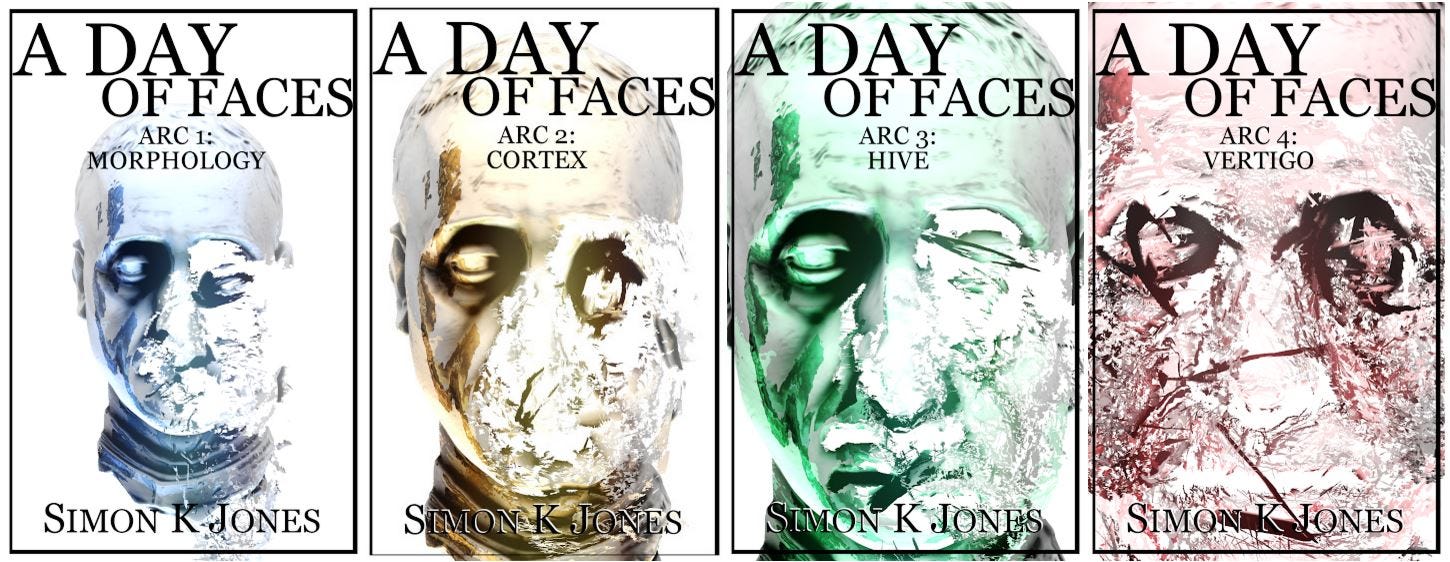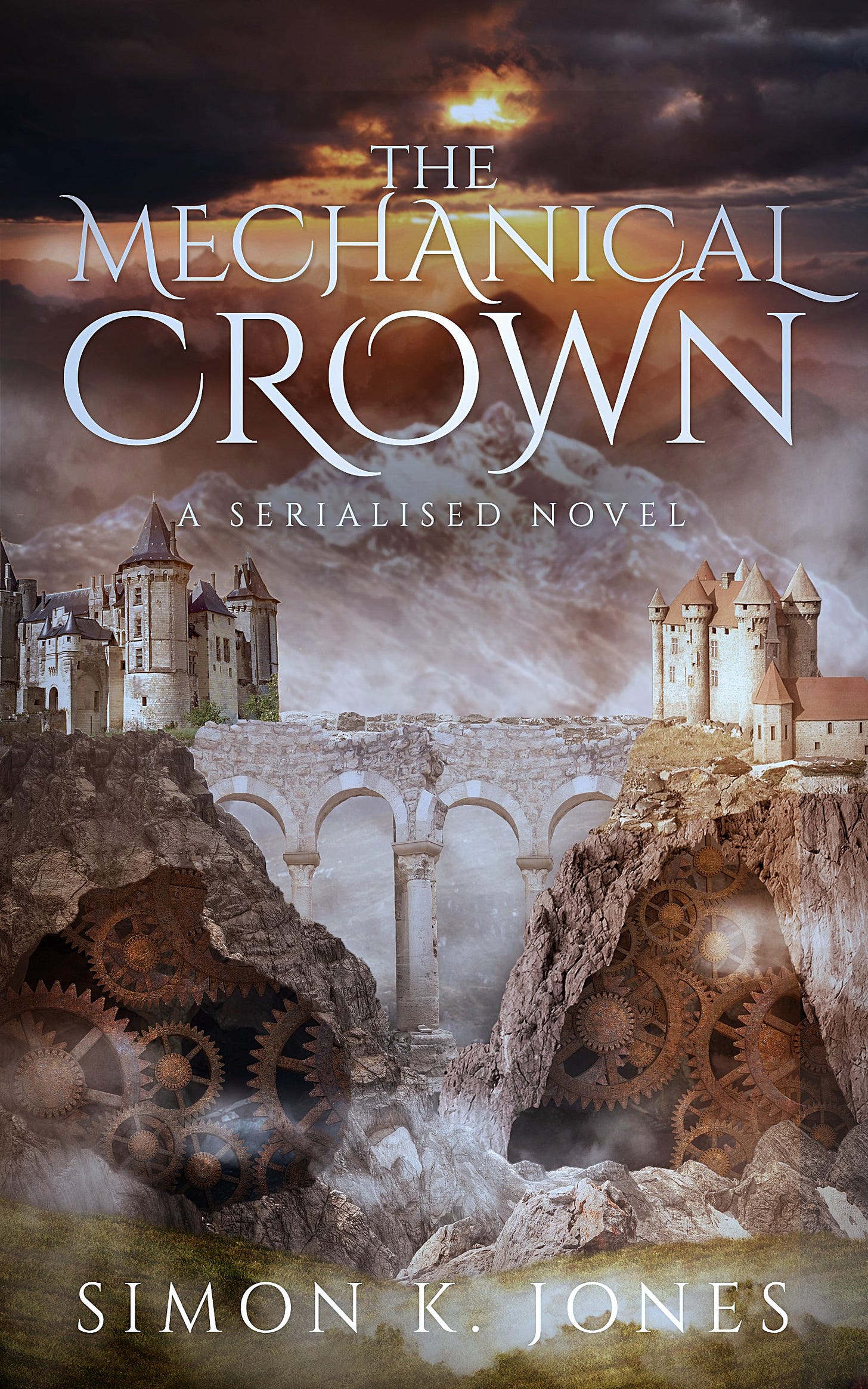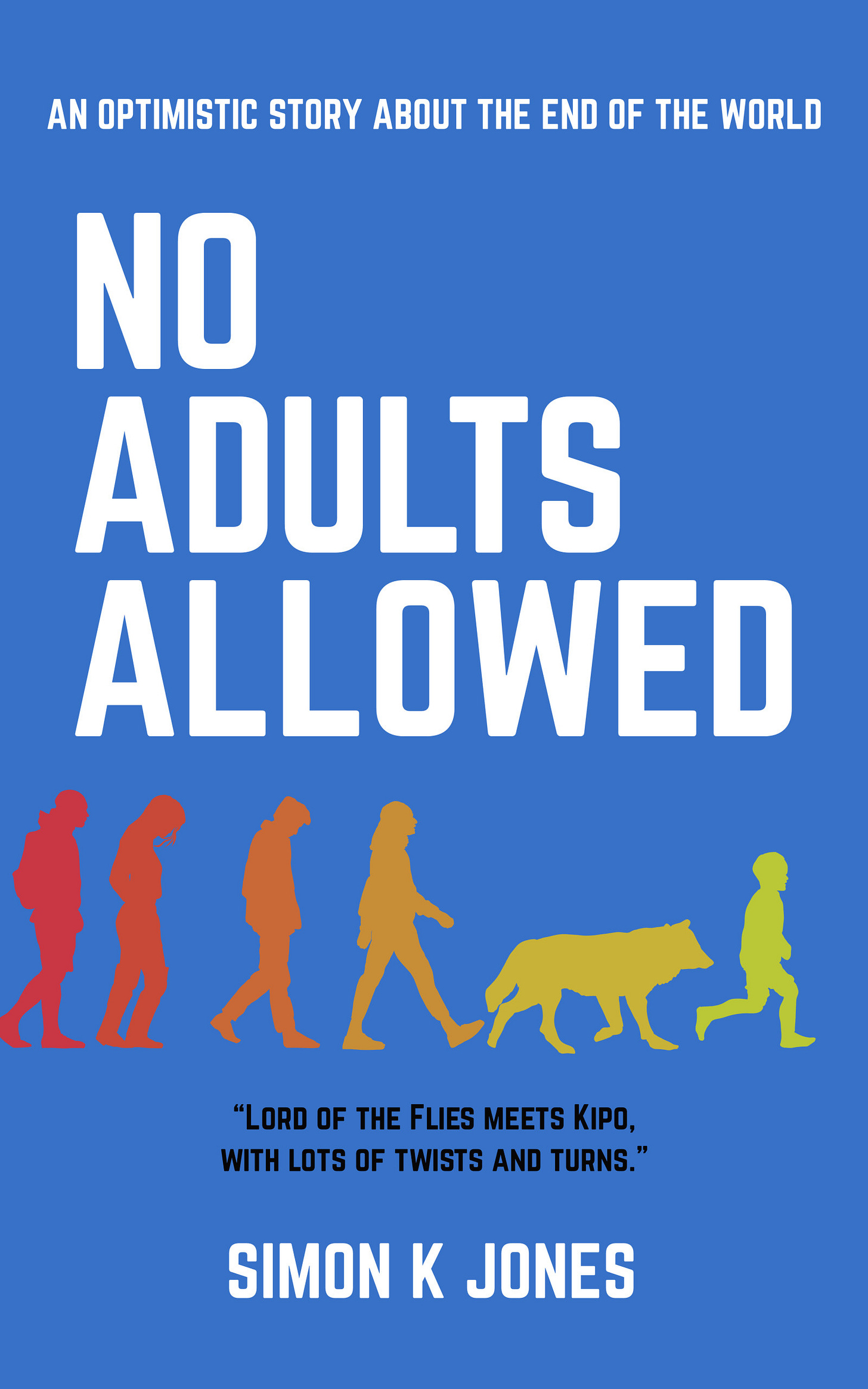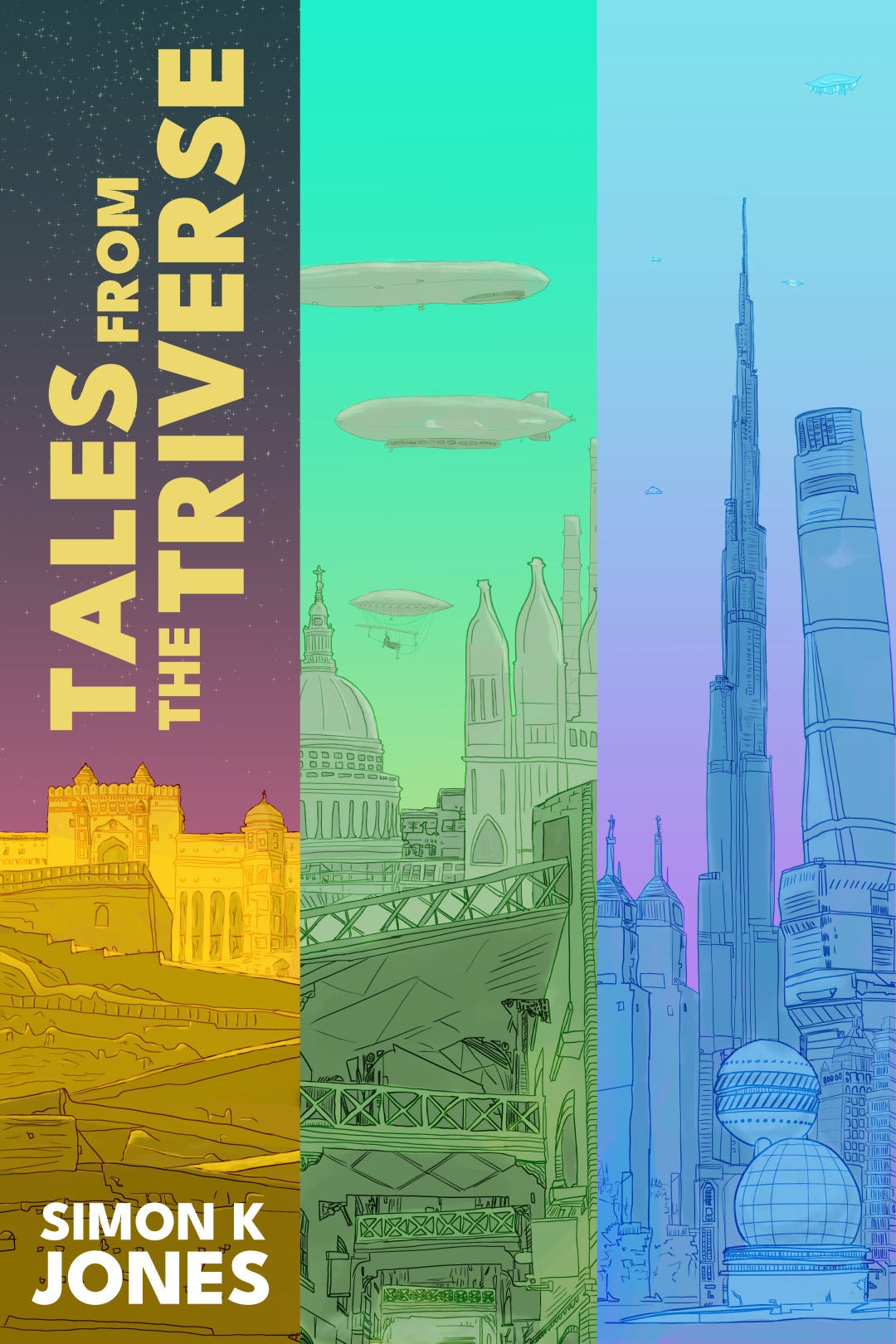My first encounter with non-linear storytelling as a kid was probably Back to the Future Part II. I was about 9 years old. That’s probably cheating, given that it’s a time travel story.
I didn’t see Pulp Fiction on release, being 13 at the time. It wasn’t until a couple of years later that I watched it and had my little teenage mind exploded. It was unlike anything I’d seen, especially in the way it told its story, looping in and around itself and playing with our assumptions about the story timeline.
Later, I remember realising that most of the stories in Pulp Fiction are very simple (the clue is in the title). It’s the structure that makes it unique and memorable. That was the first time, as a very young writer, I recognised that the way a story is told is every bit as important as the story itself.
Some other examples: Arrival used a non-linear structure in a very sneaky way, playing with expectations and understanding. Memento is another good example — and, in fact, Christopher Nolan is a filmmaker who loves to tear his plot to pieces, throw them up in the air, and then see where they land. Catch-22’s vignettes play out in a disjointed fashion. This Is How You Lose The Time War plays with expectations, largely rejecting the entire concept of time.
There are countless examples of stories which play around with structure and time. Do let me know your favourites.
I’ve got a video in which I talk about how I prefer to construct stories, and why I think plot is overrated, so I won’t rehash that here. Here’s the video if you haven’t seen it:
How to construct a story
Today’s video is about how to build a story from the key components: world building, themes, characters and plot. Which is quite a big topic, and clearly not something one should try to cover in a 25 minute video. Yet here we are.
If you unravel the non-linearity and stitch the plots back together in chronological order, some of these stories become considerably less interesting. The way they are told is intrinsic to the stories’ overall effectiveness. It’s why reading a plot summary in Wikipedia is never the same as experiencing the author’s intended storytelling.
This is not a criticism! To say a story is ‘simple’ if you ignore the creator’s chosen structure is to miss the point. Structure is storytelling. You can’t separate them.
It’s not always easy to see a story’s structure ahead of time. That’s why ‘structural edits’ are a thing — the initial manuscript is done, at which point you can look back at what you’ve got and decide if the structure suits the story. If something’s off, it might not be a problem with the story itself, but with the way you’re telling it.
Pulp Fiction re-edited in chronological order would still have great dialogue and performances. It’d still be entertaining, but it would be missing the point. It’s only with Tarantino’s chosen structure that it is elevated to a classic, the juxtaposition of scenes and the back-and-forth giving it a puzzle-like quality that enhances the overall impact and introduces moments of revelation throughout.
Picking the right structure
All of this is on my mind due to what I’ve been working on in Tales from the Triverse for the last couple of months. As such, I fancied digging through my back catalogue to revisit the various structures I chose for each story. Hopefully it’ll be of interest and possibly even some practical use for any of you who are struggling with structuring a project.
I write online serials, and tend to publish as I go, forming the first draft in public. It’s a thrilling way to write. You should give it a go. A drawback of this approach is that I don’t have the luxury of performing a structural edit — at least, not until I rework the text for a subsequent ebook release like I did with No Adults Allowed. That means having to put in a lot of thought up front about what would best suit the tale being told.
At least, this is something I realised after writing my first serial, which was only ever intended as a short, one-off experiment (ha).
To do a quick history tour…
A Day of Faces (2015)
I made this up as I went along. Sure, once I realised I was in it for the long haul and was really enjoying writing a serial, I started planning out where it was going, but I never considered its structure ahead of time.
As such, it’s a freewheeling, ill-disciplined thing with very peculiar pacing. I did try to apply some pacing to it after the fact by splitting it into vague ‘seasons’, but it was always a bit of a patch job:
You can tell that it’s structurally a bit of a bodge because 90% of the book is told in first person, from the point of view of Kay (she was a great protagonist, btw, if I may say so myself), but there are also occasional so-called ‘intervals’ that are told from the point of view of someone else entirely. Those intervals add some intrigue and mystery, but they’re an awkward fit. It’s me throwing up my hands and realising I can’t quite tell the story without cheating.
As such, if I ever turn this into a paperback, or re-serialise it, it’s going to need a huge amount of work to bring it up to expected standards.
The Mechanical Crown (2016-2019)
Having discovered the stresses of not nailing down a coherent framework, I determined to not make the same mistake with my second major project. The Mechanical Crown was to be a fantasy epic, large in scope as well as word count, so I had to know what I was doing or it would get very, very messy.
This one was unusual, in that I’d written a very bad draft of it a decade earlier, called Evinden. This was long before I tried writing serial fiction, and I was many years away from finding my preferred form. That initial draft had been told from a subjective, limited third person, with each major ‘part’ of the book told from a different character’s point of view.
It hadn’t worked. The story was too sprawling to work when limited to a single character for a significant amount of time. For the ground-up rewrite of The Mechanical Crown I switched to a more flexible mode, with each chapter being limited to a single character’s subjective POV but able to swap between characters from chapter-to-chapter. It remained a linear story, but much more agile than before.
No Adults Allowed (2020)
This was an especially fun project. It was my lockdown book, and after three years of The Mechanical Crown’s epic shenanigans I was keen for something lean, precise and…short.
That need to keep it contained meant planning in more detail than usual. This was the only time I’ve planned every single chapter ahead of time.
Knowing my tendency to drift off on (hopefully interesting) tangents, I decided to give myself an extra challenge by incorporating a countdown into the chapter numbers. The first chapter of the serial is called ‘Twenty-nine’, and it counts down from there. Whether in the context of the original weekly serial or the paperback, it’s an unnerving experience for the reader, once they realise what’s happening. What’s going to happen at zero?
Being a weekly serial, this meant being very precise with each chapter. I couldn’t go short or long, because it would throw off that countdown. Not something I’ll be attempting again!
Several chapters in the book open with mysterious computer logs, stylistically at odds with the kids-on-an-adventure tone of the main text. It’s a simple structure but adds intrigue, especially to the opening chapters: a promise to readers that something unexpected is happening below the surface.
While No Adults Allowed’s main story is fairly linear and simple, the way it is all glued together was very deliberately designed.
You can grab a copy of this one on Amazon, if you’re so inclined.
Tales from the Triverse (2021-2025)
Which brings me to my current serial, and the one I’ve been serialising for over three years via this newsletter.
I knew Triverse was going to be long, but I didn’t want it to be entirely impenetrable to anyone joining later on. I leaned into the police procedural aspect, splitting the longer plot arc into multiple ‘cases’, each of which works as a more-or-less self-contained story. When a new reader checks out the story index, that’s what they’re seeing: lots of individual stories, which add up to a larger whole.
Within chapters I wanted to be as flexible as possible, able to hop between characters as needed. Without really thinking about it, with each project I’ve become less and less regimented in how I use character perspectives, though I still write in a subjective third person — I enjoy the opportunities it affords to juxtapose different views and opinions.
Triverse, being more of an anthology for most of its run, is also quite happy to hop into flashbacks, or have one-off ‘bonus’ chapters dealing with curious off-shoots from the main story.
My current obsession with non-linearity is due to recent story events. I’ve rather torn up the rulebook I’d established for Triverse, jettisoning the police procedural superstructure. The detectives have literally been fired from their jobs and falsely accused of corruption. Following the dramatic events at the end of the previous season, I introduced a time jump of five years, scattering characters far apart from each other.
One character, Lola, was absent from the story for several weeks. Now reintroduced, she’s telling her version of events via flashbacks. The narrative timeline is fragmented, skipping between the past and the present (including a sojourn to 200 years earlier). It’s a lot to keep alive in my head, when writing for a weekly serial. I don’t get the luxury of edits and rewrites!
There’s a lot of heavy lifting of the plot, and that always makes me nervous. Which is where the non-linear flashback chronology comes in, I think. Rather than seeing events in order, we get to experience the confusion and fears of the main characters. They’ve all been ripped from their lives, and are having to figure out who they are now, and what they do. We’re having the same experience, as readers.
You can check it out for yourself here:
Character➡️Structure➡️Plot➡️Story
All of this made me realise that, as usual, it’s the characters calling the shots.
I’d originally thought that I’d implemented this back-and-forth non-linear structure for recent Triverse storylines in order to make them ‘more interesting’, and add unpredictability. But that’s not quite it: it comes down to figuring out what best represents the characters.
The upheaval faced by the lead characters in Triverse needed to be represented in the superstructure of the storytelling itself. I wanted readers to feel as discombobulated as Clarke, and Lola, and Kaminksi. The uncertainty and complex reveal of the timeline plays into the characters’ concerns and confusion. As a result, the themes emerge not only from the plot (things wot ’appen) but from the underlying foundation of the text.
I’m chasing that same feeling I got from Pulp Fiction, where the juxtaposition of events in a particular order make us feel things more strongly. Character moments are arranged in such a way that they make maximum impact, and that optimum order is rarely chronological.
How have you structured your projects?
Thanks for reading.
If you don’t already listen to
’s Comics Lab podcast, make sure you add it to your queue. It’s vital for comics creators, of course, but is also packed full of advice for any independent creator. Here’s a recent episode:There’s talk at the end of that episode about business plans, taxes and so forth. I was reminded of another podcast I listened to a decade-or-so back, where a young indie writer in the UK was being interviewed. She’d had quite some success on Amazon, and the host asked about the implications around tax. Her response was along the lines of “well, there’s a tickbox in the Amazon dashboard to say that you’ve sorted it, and that you don’t need to pay US taxes.”
That was it.
In other words, she wasn’t doing anything around taxes, and thought that ticking that box was all she had to do. I just hope that HMRC didn’t have that particular podcast on their playlist.
Right, I’d better go do my taxes.
Sigh.









I find nonlinear storytelling interesting, but have honestly always been a little intimidated by it. I tend to build my stories from start to finish without using an outline. I have no idea how I'd write something that didn't have a clear chain of cause and effect. Maybe write from start to finish and then mix it up afterwards?
I love the variety of storytelling exploration this represents, thanks Simon! I'm a huge fan of non-linear.
I'm trying to work with multi-timelines myself in The Glaciermen, where the main proportion of the story is set in the past, but each chapter begins with short-ish continuation of the present to keep the main arch moving forward. Revelations have to be carefully planned so the present doesn't spoil the past, (and so the past doesn't spoil the present, which is an interesting concept, imo).
If I pull it off, the whole thing will be one tightening coil of tension until the past collides with the present in a spectacularly epic finale! That's the hope at least.